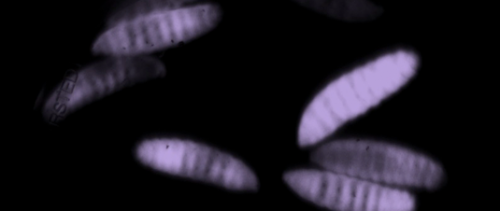Bacteria coordinate activities with chemical 'language'

Ludwig Maximilian University of Munich researchers have discovered a previously unknown chemical language used by many bacterial species to coordinate their activities, and show in a model organism that such intercellular communication is essential for pathogenicity.
Bacterial cells employ chemical signals for intra- and interspecific communication, allowing them to coordinate the activities of local populations. In many pathogens these chemical "languages" serve to activate processes that are deleterious to their hosts. A team of researchers led by Dr. Ralf Heermann, a Privatdozent at LMU's Institute of Microbiology, and Dr. Helge Bode, Merck Professor of Molecular Biotechnology at Goethe University in Frankfurt/Main, has now characterized a previously unknown chemical vernacular, which appears to be quite widespread among bacterial species. Their findings have just appeared in the "Proceedings of the National Academy of Sciences" (PNAS).
Different bacteria use different languages to communicate with members of their own species ("conspecifics") in the same environment. In 2013, Heermann, Bode and colleagues had already discovered a novel chemical language in a species assigned to the bacterial genus Photorhabdus. Now they have repeated the trick, and describe a novel class of chemical signals used by many bacterial species for intercellular communication.
The best known and most extensively studied bacterial communication system is based on the use of chemicals called N-acylhomoserinlactones (AHLs). These agents are synthesized by the enzyme LuxI and secreted into the environment. Conspecific cells display an intracellular receptor protein called LuxR that recognizes and binds the AHL, and signal binding induces the bacteria to activate a specific genetic program, effectively altering their biochemical make-up and behavior. Induction of the new program requires the presence of a certain threshold concentration of the inducer, so that it is activated only if sufficient numbers of cells produce the appropriate signal molecule. In other words, the decision requires the presence of a "quorum" of signaling cells, and for that reason such cell-density-dependent sensory networks are referred to as "quorum-sensing" systems.
In their latest project, the research groups led by Heermann and Bode studied another member of the genus Photorhabdus, called P. asymbiotica, which harbors a LuxR-type receptor, but lacks the enzyme LuxI required to synthesize AHL. P. asymbiotica causes disease primarily in insects, but is also capable of producing skin lesions in humans, and its LuxR protein specifically recognizes the signal molecule dialkylresorcinol. "In this quorum-sensing system, the inducer plays a very important role in the development of pathogenicity. In fact, we demonstrated that the ability to produce dialkylresorcinol – and therefore the capacity for communication with conspecifics – is indispensable for successful infection of the larval host," Ralf Heermann explains.
The researchers then examined a diverse range of bacteria in addition to P. asymbiotica, and found that the new signaling system is widely distributed. "We identified over 100 other bacterial species – many of them pathogenic to humans – that lack LuxI, but are able to synthesize the new signal," says Helge Bode.
Jamming communications to prevent disease
As in the case of P. asymbiotica, bacterial communication systems often have a pivotal function in controlling mechanisms of pathogenicity. They therefore have obvious medical implications, as they represent a possible point of attack for novel antibacterial drugs. By disrupting the necessary channels of communication, it should be possible to inhibit activation of the genes responsible for pathogenicity. Moreover, as Bode points out, "inhibiting development of the properties that damage their hosts, instead of killing bacterial cells outright with antibiotics, should also significantly reduce the incidence of drug resistance."
More information: "Dialkylresorcinols as bacterial signaling molecules." PNAS 2015 112 (2) 572-577; published ahead of print December 30, 2014, DOI: 10.1073/pnas.1417685112
Journal information: Proceedings of the National Academy of Sciences
Provided by Ludwig Maximilian University of Munich


















